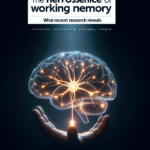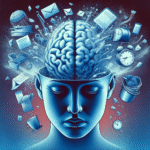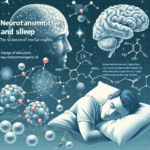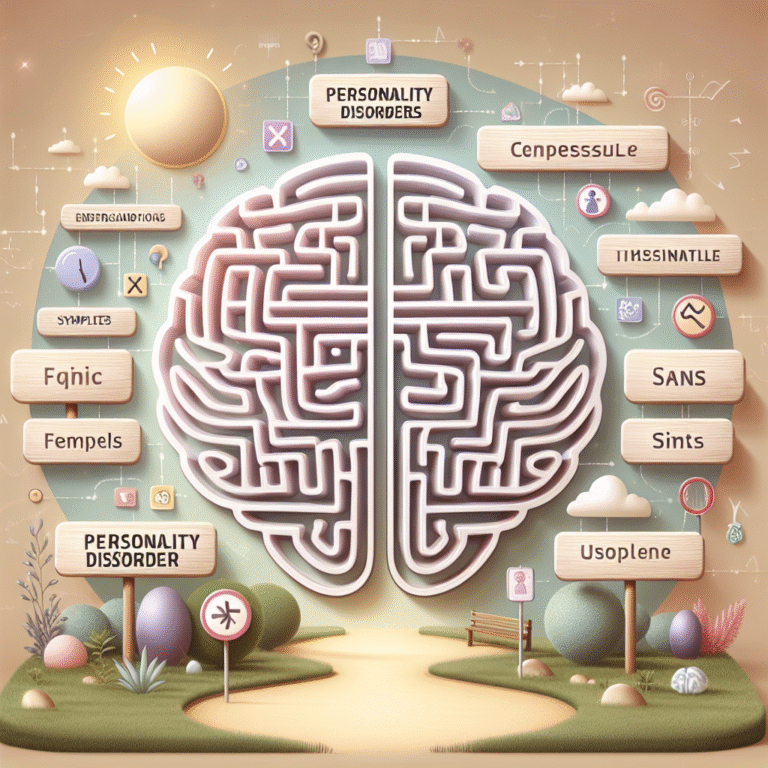
Healing from Within: Exploring the Top Therapies for PTSD and Their Life-Changing Benefits

Introduction: The Silent Battle of PTSD
Millions of people battle the silent battle of Post-Traumatic Stress Disorder (PTSD). Whether it stems from military combat, abuse, or natural disasters, PTSD can dramatically alter one’s life, creating a debilitating cycle of anxiety and despair. Fortunately, awareness around PTSD has risen, leading to an abundance of therapeutic options that promote healing from within. This article will explore various therapies that are transforming the lives of those affected by PTSD, revealing the profound benefits they can offer to individuals seeking solace and recovery.
Understanding PTSD: A Prelude to Healing
Before diving into the therapies available, it’s important to understand PTSD. Recognized by prominent organizations like the American Psychiatric Association, PTSD can manifest through symptoms such as intrusive thoughts, nightmares, severe anxiety, and uncontrollable thoughts about the traumatic event. These symptoms can lead to emotional numbness, social withdrawal, and impaired daily functioning.
The Impact of PTSD on Daily Life
The repercussions of PTSD stretch beyond the individual, affecting relationships, familial bonds, and even workplace dynamics. Those suffering may find it challenging to trust others or participate in activities they once loved. This makes effective therapeutic intervention crucial for those striving for recovery.
Healing from Within: Exploring the Top Therapies for PTSD

The healing journey often begins with self-awareness and the courage to seek help. Let’s explore the top therapies that facilitate this healing process and their life-changing benefits.
1. Cognitive Behavioral Therapy (CBT)
CBT is widely regarded as the most effective treatment for PTSD. This therapy focuses on identifying and changing negative thought patterns that contribute to feelings of distress and anxiety.
Life-Changing Benefits:
-
- Enhances Coping Mechanisms: Individuals learn to replace negative thoughts with positive affirmations, gradually improving their mental well-being.
-
- Emotional Regulation: CBT helps patients recognize triggers and manage emotional responses effectively.
Case Study: Sarah’s Journey with CBT
A veteran, Sarah was trapped in a cycle of flashbacks and hypervigilance. After pursuing CBT, she developed strategies to cope with her thoughts. Within six months, Sarah reported a significant reduction in her anxiety levels, allowing her to reconnect with family and friends.
2. Eye Movement Desensitization and Reprocessing (EMDR)
EMDR, a unique form of therapy, assists patients in processing traumatic memories. The therapist uses guided eye movements to help patients reprocess and integrate traumatic memories.
Life-Changing Benefits:
-
- Accelerated Healing: Many patients report substantial relief from symptoms after just a few sessions.
-
- Reduced Avoidance Behaviors: EMDR encourages individuals to confront and rework traumatic memories without the debilitating effects of traditional exposure therapy.
Case Study: John’s EMDR Experience
John, a survivor of a natural disaster, struggled with intrusive thoughts and avoidance of places that reminded him of the trauma. After a series of EMDR sessions, he was able to revisit those spaces with reduced anxiety and outline plans to navigate similar situations confidently.
3. Mindfulness-Based Therapy
Mindfulness practices have gained popularity for their ability to promote presence and awareness. Mindfulness-Based Stress Reduction (MBSR) is a systematic approach incorporating meditation and awareness techniques.
Life-Changing Benefits:
-
- Improved Resilience: Through mindfulness practices, individuals experience better emotional regulation and resilience against stressors.
-
- Decreased Rumination: Participants frequently report spending less time ruminating on negative ideas, which helps mitigate the negative symptoms of PTSD.
Case Study: Maria’s Mindfulness Transformation
Maria, who experienced trauma as a child, turned to mindfulness therapy after enduring years of anxiety. By immersing herself in mindfulness exercises, she became more attuned to her emotions and improved her relationships. The practice made her realise that she could acknowledge her past without allowing it to define her present.
4. Art Therapy
Art therapy is a creative approach that allows individuals to express their feelings and experiences through art. This process can provide insight into one’s mental state and facilitate communication.
Life-Changing Benefits:
-
- Safe Expression of Emotions: Art serves as a non-verbal outlet, helping individuals express emotions that may be difficult to articulate.
-
- Enhanced Self-Discovery: Many find that creating art leads to insights about their trauma and healing process.
Case Study: Tom’s Artful Healing
Tom, a police officer suffering from PTSD, discovered art therapy as a means of expression. Through painting, he was able to depict his trauma visually, which facilitated discussions in therapy sessions. Over time, Tom became more comfortable sharing his experiences verbally, marking a pivotal shift in his healing journey.
5. Somatic Experiencing (SE)
This body-centered therapy focuses on the physiological effects of trauma. Somatic experiencing recognizes the connection between the body and mind, encouraging individuals to release trauma-related stored tension.
Life-Changing Benefits:
-
- Physical Release of Trauma: SE helps individuals physically release pent-up emotions and trauma-related tension.
-
- Enhanced Awareness: The therapy cultivates greater body awareness, improving emotional and physical well-being.
Case Study: Lisa’s Somatic Exploration
Lisa had experienced various traumas throughout her life, which manifested in chronic pain and anxiety. Through somatic experiencing, she learned to reconnect with her body and release stored tension, resulting in noticeable physical relief and a sense of empowerment.
Table: Comparative Overview of Therapies for PTSD
| Therapy Type | Core Focus | Benefits | Ideal For |
|---|---|---|---|
| Cognitive Behavioral Therapy | Thought patterns | Improved coping, emotional regulation | General PTSD symptoms |
| Eye Movement Desensitization and Reprocessing | Traumatic memories | Accelerated healing, reduced avoidance | Specific traumatic events |
| Mindfulness-Based Therapy | Present-moment awareness | Improved resilience, decreased rumination | Chronic anxiety and stress |
| Art Therapy | Creative expression | Safe emotional outlet, enhanced self-discovery | Those struggling to vocalize fears |
| Somatic Experiencing | Body awareness | Physical release of trauma, enhanced awareness | Chronic pain and trauma symptoms |
Conclusion: A Path to Liberation
Healing from PTSD is not simply about alleviating symptoms; it’s about reclaiming one’s life and sense of self. The therapies discussed—CBT, EMDR, mindfulness, art therapy, and somatic experiencing—offer powerful pathways for healing from within, allowing individuals to confront their trauma constructively. The journey toward recovery is often nonlinear and requires patience, persistence, and support. However, embracing these therapeutic avenues can ultimately lead to profound transformation and a renewed ability to engage fully with life.
FAQs Section
By fostering awareness and understanding through these therapeutic approaches, individuals struggling with PTSD can find the strength and support they need to embark on their healing journeys. The path may be rife with challenges, but the benefits of healing from within are vast and life-altering, paving the way for a brighter, more hopeful future.

















